A little Argento mixed with a little Bava and you fear to close your eyes at night.
DARIO ARGENTO
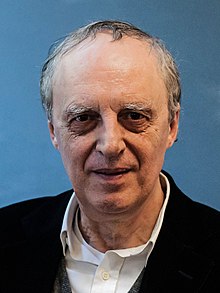
When the name Dario Argento is mentioned people usually initially mention his film "Suspiria". I prefer to mention his odd "Phantom of the Opera". He is also considered by most a director, but it is his writing that forms the major part of Argento's legacy.
To begin with lets clear up how to pronounce his name. Dario Argento is pronounced darjo arˈdʒɛnto in Italian. He was born in Rome, Italy on September 7, 1940 at the start of the Second World War. His father was Italian film producer Salvatore Argento and his mother Brazilian fashion model Elda Luxardo.
Salvatore became a motion picture producer and before he worked with his own son. He was known for producing the films of Sergio Corbucci, Mauro Bologini and Alfio Caltibano starting in 1951. His son Dario elected not to go to college, but to work on a newspaper "Paese Sera". This newspaper had started out as the "Afternoon" edition of "The Country of Rome". Which interestingly was founded on January 21, 1948 by the Italian Communist Party as a means of influencing an upcoming election.
Reliable American character actor Robert Webber is afforded a rare leading role in the Italian Every Man is My Enemy. Webber plays a Mafia "torpedo" with an agenda all his own. While in Marseilles, he plots to pull off a big diamond robbery. Now he must not only avoid being nabbed by the authorities, but also dodge the bullets and knives of his fellow mobsters. Elsa Martinelli and Jean Servais co-star. ~ Hal Erickson, Rovi
Next came three motion pictures were Dario Argento wrote the initial story treatment, but not the screenplays.. All of this leading to a motion picture I originally saw in its full length Italian version while being stationed at the U.S. Navy base in Naples, Italy shortly after the film's release on December 21, 1968.
The story was by, in order of screen credit, Dario Argento, Bernardo Bertolucci and Sergio Leone and was titled "C'era una volta ll West (Once Upon A Time in the West)",
During Dario Argento's screenplay writing period that followed "Once Upon A Time in the West". He would write six more motion picture treatments. Three of the actual motion pictures made from Argento's screenplays starred American actors Lee Van Cleef, Peter Graves and Jack Palance. Van Cleef and Palance would make Italy their second home and appear in many more films especially during the actual Spaghetti Western Period, A couple of Argento's film treatments would be re-written into English and released in the United States adding American names to the writing credits. The two pictures were the+ Peter Graves film "Seven Man Army" and the Jack Palance film "Battle of the Commandos".
Following the release on October 22, 1969 of the film "La stagione dei sensi (The Season of the Senses)" written by Argento a change of direction occurred in his motion picture career that would forever impact Italian and American Cinema.
The motion picture was produced by Salvatore Argento, written and directed by Dario Argento, music by Ennio Morricone, starring Tony Musante and Suzy Kendall and released in Italy on February 19, 1970. The title was "L'uccello dalle plume di cristallo (The Bird with the Crystal Plumage)".
Before I go any further my reader should know that Argento's film was an updated revision of a forgotten and overlooked 1958 American film based upon the same novel "Screaming Mimi" by Fredric Brown. Dario Argento never gave screen credit to the author when he made "The Bird with the Crystal Plumage", but later admitted it was his source material. The original 1958 film starred Swedish-Italian actress Anita Ekberg two years before she made Federico Fellini's "La Dolce Vita".
The plot is described on IMDb this way
Exotic dancer Virginia Wilson sees a man get shot moments after he tries to knife her in a shower, so she goes to Dr. Greenwood a psychiatrist for therapy. He falls in love with her and takes over her life, although she insists on continuing her career at the El Madhouse nightclub. The club's tough owner is none other than Gypsy Rose Lee who plays 'Gypsy' and sings an incredibly bad song ("Put the Blame on Mame") when Virginia is late one night. The traumatized Virginia is suspected of a series of murders. Each victim had purchased a contorted sculpture of a woman called the Screaming Mimi, which was created by her step-brother Charlie who was also responsible for shooting her attacker. It's up to a handsome columnist Bill Sweeny to figure it all out.
The plot for Argento's film goes this way:
Sam Dalmas (Tony Musante) is an American writer living in Rome with his girlfriend Julia (Suzy Kendall). He witnesses an attack on a women named Monica (Eva Renzi). Who is the wife of the owner of an Art Gallery named Alberto (Umberto Raho). Monica's assailant is a mysterious black gloved person in a raincoat. This event leads to Sam's involvement in a police manhunt for a serial killer. However, there is something about Sam's recollection of the attack on Monica that is bothering him.
Sam visits a shop associated with the last murder and finds out that only one painting was sold during the period of the serial killings. The painting is of a man in a raincoat murdering a young women. On his way home Julia is attacked at their apartment by the gloved figure, but Sam arrives and the assailant escapes.
Sam now begins to receive phone calls from the killer. There is an odd clicking noise in the background of the calls which the police finally identify. It is the title animal. A rare bird with special plumage that causes the clicking sound. There is only one of these birds in Italy and it is at the Rome Zoo. The police decide that is were the killer is to be found.
At the Zoo Sam and the police see Monica fighting off her husband Alberto, Alberto is attempting to stab her. He then falls six stories to the ground, but before he dies. Alberto confesses to the murders. Everyone is relieved believing the case is closed.
Looking around Sam discovers that both Julia and Monica have left. So he returns to their apartment house to find another murder victim and Julia injured, bound and gagged. The assailant emerges and it is Monica. Sam now realizes that what he originally saw was not Alberto attacking Monica, but Monica attacking Alberto. Monica flees with Sam in pursuit.
The climax of the film takes place back at the art gallery. Sam is trapped under a large sculpture by Monica and about to be murdered as the police arrive. Julia was able to escape and get their help. Monica is arrested and sent to a psychiatric hospital. At this point in the narrative the audience learns the killing spree goes back to the painting of the man in the raincoat murdering the young women. Monica identified not with the young girl, but the murderer. Her husband Alberto was actually attempting to cover up for his wife after convincing himself it was the right thing to do. Hence his false confession.
When the movie was released in the United States 20 seconds of violence was removed to meet the standards of the time. In dollars the film cost $500,000 to make and in Italy grossed twice that amount. The motion picture was nominated for the 1971 "Edgar Allan Poe" award. Dario Argento had found his place in Italian and International Cinema. One last point. This movie was Argento's second acting role. He played the murders hands so that you would not associate them with either the characters of Monica, or Alberto. Kind of a clever move.
Here is a link from :dailymotion" to the English language version of the motion picture. I do not know if this is the one with the missing 20 seconds, or not.
http://www.dailymotion.com/video/xmt1eb_the-bird-with-crystal-plumage_shortfilms
!971 would see two feature films written and directed by Dario Argento. The first was ":ll gatto a nove code (The Cat of Nine Tails)" released in Italy on February 11, 1972. This is the films description from "Rotten Tomatoes":


This is a link to the trailer for "The Cat of Nine Tails"
https://www.youtube.com/watch?v=BmrqvVBf210
Argento's second 1971 feature was "4 mosche di vellluto grigio (Four Flies on Grey Velvet)" released December 17,1971 in Italy.
From the website "The Terror Trap" (See the full review on the attached link).
http://www.terrortrap.com/reviews/fourfliesongreyvelvet/
The set up for Dario Argento's first true horror film is:


Here is a link from :dailymotion" to the English language version of the motion picture. I do not know if this is the one with the missing 20 seconds, or not.
http://www.dailymotion.com/video/xmt1eb_the-bird-with-crystal-plumage_shortfilms
!971 would see two feature films written and directed by Dario Argento. The first was ":ll gatto a nove code (The Cat of Nine Tails)" released in Italy on February 11, 1972. This is the films description from "Rotten Tomatoes":
In this flawed mystery-thriller from flamboyant horror director Dario Argento, Karl Malden portrays a blind man who joins forces with a reporter (James Franciscus) to catch a killer with an extra chromosome. Much of the action occurs at a research hospital, where the killer seeks to conceal the original crime with still more murders. Easily the least interesting of Argento's early thrillers (which include the superior L'Uccello dalle Piume di Cristallo and Quattro Mosche di Velluto Grigio), this film seems almost a parody of the genre at times, with preposterous coincidences and bogus Freudian analysis substituting for genuine mystery. Those familiar with the director's work may find it difficult to believe that Argento was responsible, but some undeniable stylistic touches -- such as one victim's wallpaper resembling a blood-splattered wall -- reveal that even a genius can make bad films. Ennio Morricone's soundtrack and a cast including Catherine Spaak and Pier Paolo Capponi offer little relief. The American version is missing approximately twenty minutes. ~ Robert Firsching, Rovi
This is a link to the trailer for "The Cat of Nine Tails"
https://www.youtube.com/watch?v=BmrqvVBf210
Argento's second 1971 feature was "4 mosche di vellluto grigio (Four Flies on Grey Velvet)" released December 17,1971 in Italy.
From the website "The Terror Trap" (See the full review on the attached link).
http://www.terrortrap.com/reviews/fourfliesongreyvelvet/
The set up for Dario Argento's first true horror film is:
Roberto Tobias (Michael Brandon) is a drummer in a rock band. Of late, he's certain he has been followed by an unknown shadow. As he leaves band rehearsal one evening, Roberto sees a man watching him. Chasing the figure into an empty theater, Roberto confronts the stranger - who brandishes a knife.
During a struggle, Roberto turns the tables and accidently kills the man. However, the accidental 'murder' does not go unwitnessed...to Roberto's horror, a strange puppet-masked figure in the balcony above quickly snaps photos of the drummer grasping the knife.This film is filled with new technology and "The Terror Trap" describes on scene in detail:
Argento's style in Four Flies comes to real fruition with Nina's decapitation. The stunning, slow motion sequence of Nina rear-ending a trash compactor truck (the edge of the truck crashing through the windshield and cleanly severing her head) garners the optimum effect. The lyrical end score blankets the scene perfectly and provides perhaps an unexpected poignancy to the killer's machination
Speaking of the technical innovations used by Dario Argento in "Four Flies on Grey Velvet" according to Alan Jones in his book "Dario Argento: The Man, The Myths & The Magic":
A high-speed camera equipment (capable of producing 1000 frames a second) was used to shoot possibly the first known instance (in feature films) of following a bullet's trajectory with high-speed cameras.
To film a car crash and a motion bullet in its flight, a camera that could produce a triple digit number of frames per second and twelve cars were used to get the effect shown in the film.Michael Buening in a review on "AllMovie" referred to Dario Argento's "Four Flies on Grey Velvet" as:
an unfortunately overlooked and hard-to-find choice nugget in his oeuvreReturning to "dailymotion" here is a link to the feature film. So that YOU my reader can decide if Michael Buening is correct:
http://www.dailymotion.com/video/xlsixu_four-flies-on-grey-velvet_shortfilms
Dario Argento's first three directed motion pictures form what is known as his "Animal Trilogy". Then in
1972 Dario Argento seemed to take some time off as the only motion picture he was associated with was a Western comedy called "Cosi sia (So Be It)" aka: "A Man Called Amen" that he wrote the screenplay for. At the start of 1973 Argento became involved in television. When he wrote one episode of an Italian Mystery TV Anthology Series "La porta sul buio (Door Into Darkness) and produced four other episodes of the series.
Dario Argento's next motion picture as a director and writer was a comedy-drama", On December 23, 1970 "Le cinque giornate (The Five Days aka: The Five Days of Milan)" was released.
The story was about two men who get involved with the anti-Austrian revolt of 1848.
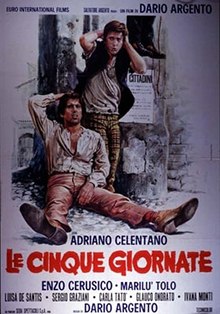
The film was a complete failure and Italian audiences hated it, because they were expecting a film in the style of "The Animal Trilogy". Italian movie goers would not accept anything else from Argento and Dario Argento got the message. Out of failure sometimes success rears it head. In this case Argento returned to what he seemed to know best and his next venture was "Profondo rosso (Deep Red)" aka: "The Hatchet Murders".
Released on March 7, 1975 in Italy the movie was once more a family affair. The film was produced by Dario's father Salvatore Argento and his younger brother Claudio with a script by Dario and Bernardino Zapponi. As the above still shows the film featured British actor David Hemmings as Marcus Daly.
Jazz musician and music teacher Marcus Daly witnesses the murder of a psychic medium and becomes involved in tracking down the killer. The film contain some elements already used by Argento including once more a specific painting that may hold the clue to what has been taking place.
Once again Dario Argento gets acting credit for playing the killers hands in "Deep Red".
The film "Deep Red" is considered by many as Dario Argento's masterpiece of horror and terror. It is recognized as such by film critics around the globe. Even if in the United States the Distributors felt they needed to pitch the motion picture the way the above poster reads.
The following is a link to the official English language version of the motion picture with 22 minutes of cuts approved by Argento. For a long time it was thought the U.S. Distributors made the cuts on their own without his approval to permit the movie to be released on June 11, 1976.
This cut is still well worth your time to view. The original film ran Two Hours and Six Minutes, but this version runs One Hour and Forty. Some of the graphic violence has been removed along with some of the romantic scenes between David Hemmings and Daria Nicolodi which established character relationships. It is a shame that American censors felt they needed to do this. In 1999 Anchor Bay restored most of the film for their DVD/VHS releases. It is a hybrid of the English dub and scenes in Italian with subtitles. The end credits of the film could not be restored as originally shot.
https://www.youtube.com/watch?v=C86X6toiWrA
Actress Daria Nicolodi became Dario Argenta's partner during the filming of "Deep Red". They would be together through 1985. During this period their daughter Asia born on September 20, 1975. She would become an actress and we will meet her in that capacity in several of her father's later works.
Dario Argento's next film was once more a family affair. Written by director Argento and Nicolodi and produced by Salvatore and Claudio. The film starred American actress Jessica Harper (Phoenix in Brian De Palma's "The Phantom of the Paradise").The film was of course "Suspiria" which is pronounced sus pi ri a).
The film was the first of a trilogy that Argento called "The Three Mothers Trilogy" that would not be completed until 2007. The story has Harper arriving on a stormy night, naturally, to attend a prestigious dance academy in Freiburg, Germany. What she does not know is the academy is also a front for a coven of witches needing sacrifices. Harper's Suzy Bannion becomes involved with the coven as grizzly murders occur to other students and it seems to revolve around the founder who was said to be a witch. The climax has the founder rising the dead to kill Harper.
"Suspiria" was immediately followed by the second film of Argento's trilogy and released in Italy on February 7, 1980. The film was entitled "Inferno". The movie is considered by critics to be a thematic sequel to the first film of the trilogy
Does this description from IMDb sound familiar and seem that Dario Argento was stuck on a theme?
An American college student in Rome and his sister in New York investigate a series of killings in both locations where their resident addresses are the domain of two covens of witches.Every hear of a book of short essays entitled "Suspiria de Profundis"? Which is Latin for "Sighs from the depths". The work was by English essayist Thomas De Quincey and published in 1845. According to this the website E-Notes:
http://www.enotes.com/topics/thomas-de-quincey/critical-essays#critical-essays-de-quincey-thomas
Some critics consider De Quincey's Suspiria de Profundis the supreme prose fantasy of English literatureIt was this work that formed the basis for the " Three Mother's Trilogy"..
As I said although not part of of his "Three Mother's Trilogy" the next film by Dario Argento was "Tenebre" and the script sounds vaguely familiar according to IMDb:
An American writer in Rome is stalked by a serial killer bent on harassing him while killing all people associated with his work on his latest book.Argento's next film though had a unique twist. "Phenomena" starring Jennifer Connelly is about a girl who goes to a Swiss Boarding School and can communicate with insects that helps solve a string of murders.The insects are used to spy on what is going on at the school.
Argento's partner Nicolodi and Donald Pleasence co-star. You may have seen the film in the United States under the title "Creepers" from New Line Cinema, but as usual they cut 28 minutes of the 110 minute Italian original.
Here's a link to the uncut version of the motion picture:
https://www.youtube.com/watch?v=c_ShbnAc0yc
This excellent entry was followed by two films which are identical except for the setting and Dario Argento was just one of the group of writers on these Lamberta Bava directed films. Bava being the son of Mario..
"Dermons" is described on IMDb as:
A group of people are trapped in a large movie theater in West Berlin that is infected by ravenous demons who proceed to kill and posses the humans one-by-one, thereby multiplying their numbers.
While "Demons 2" is described as:
A group of tenants and visitors are trapped in a 10-story high-rise apartment building infested with demons who proceed to hunt the dwindling humans down.Dario Argento's 1987 film "Opera" aka" "Terror at the Opera" might remind some viewers of the 1971 Clint Eastwood film is basic plot composition by Argento. It could also be described as a "Phantom of the Opera" variation. Although in another eleven years Dario Argento would make his unusual own variation of Leroux's novel.
The basic plot revolves around a the back-up singer for the lead in a production of the opera "MacBeth". She finds herself now the lead when the star is involved in a timely car accident. Sounds very "Phantom", but the murders appear to be from a crazed fan of her. Very "Play Misty" in style.
However, Dario Argento's twist concerns the past of the back up "Betty" that seems to be played out in her dreams involving her mother and a masked stranger. This all comes together in a very terrifying climax.
The following is a link to a video made up of scenes from "Opera" set to Dario Argento's main music theme for the picture. You get a very good idea of the story in this 6 minute music video.
Another writing project only "The Church" followed "Opera" and an interesting two story film with George Romero entitled "Due oochi diabolici (Two Evil Eyes)" was released in Italy on January 25, 1990 and in the U.S.A. on a year later on October 25, 1991,
The motion picture is unique in that they are contemporary variations on two of Edgar Allan Poe's tales. The first is "The Facts in the Case of M. Valedemar" and stars Adrienne Barbeau filmed by Romero and "The Black Cat" by Argento which is a blend of several of Poe's tales and characters starring Havey Keitel as Roderick Usher. Dario Argento went to George Romero's home territory to film his segment in Pittsburgh, Pennsylvania.


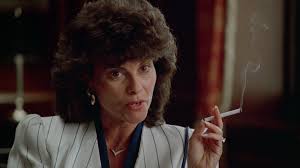
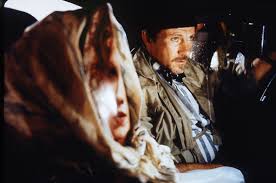
The film is one that I am sure Dario Argento wanted to forget. It cost $9 million dollars to make and only grossed a world wide box office on initial release of $349,618.00.
Three more writing of film scripts with others and we come to my favorite Dario Argento film "ll fantasma dell' opera", but not may favorite version of "The Phantom of the Opera". It is at least the most interesting with Argento's plot twist on the character of the Phantom himself.
We also arrive at the first film with Argento's daughter Asia playing Christine Daae. Playing the Phantom was one of my favorite and usually overlooked actors of the time Julian Sands. Dario Argento's twist on the Gaston Leroux classic is In this film the Phantom is not scared and does not wear a mask and he communicates with Christine telepathically.This Phantom as a baby was saved by a pack of rats and they rise him under the Paris Opera House. The motion picture opened on November 20, 1998 in Italy. Nine days later critic David Rooney wrote in "Variety":



Here is a link to the trailer for Dario Argento's "Phantom of the Opera":
https://www.youtube.com/watch?v=KFBMRdTHfXE
Asia Argento returned in her fathers "La sindrome di Stendha (The Stendhal Syndrome)" released in Italy January 26, 1996. A film many critics consider Dario Argento's last masterpiece.
IMDb describes the plot:


A little Kim Novak in "Vertigo" above?

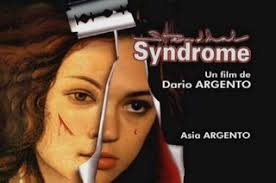
Speaking of "Vertigo" and Alfred Hitchcock.
On March 19, 2005 saw the release on Belgium television of a made for TV movie by Dario Argento. The film would not be released in Italy until December 1st and then on DVD as it was in almost every other country. Throughout his motion picture career Argento was being compared to the master Alfred Hitchcock. So it was not unimaginable that he would pen and direct a movie entitled: "Ti piace Hitchcock (Do You Like Hitchcok?)".




The film had specific references to the works of Alfred Hitchcock:
College student Julio has his leg broken and we see him ala James Stewart in "Rear Window" spying on the crimes being committed.
A character commits a murder for another person as had Robert Walker in "Strangers on a Train" for Farley Granger.
The killer is captured after keys are switched in "Dial M for Murder" to catch Ray Milland.
A distraught women is held from falling by her arm from a person who is above her is a take on Jimmy Stewart at the beginning of "Vertigo" almost falling off the roof.
The above bathtub scene with a falling wig is an obvious take on "Psycho".
Should you not get these while watching the movie. The rented video's from a store happen to be "Strangers on a Train" and "Dial M for Murder". The two posters seen in the store are for the motion picture "Vertigo" and Alfred Hitchcock.
Asia was once more working for her father in the final film of the "Three Mothers Trilogy". The Italian title is actually "La terza madre (The Third Mother)", but the film is known as "Mother of Tears" or by the English language press the film is also known as "Mater Lachrymarum (once again "Third Mother"). The motion pictures was originally released in Italy on the appropriate October 31, 2007, The reason the English press refers to the film as "Mater Lachrymarum" is because it is the confrontation with the third "Mother" witch who goes by that name.



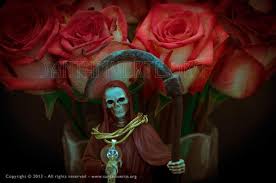
This film was another Argento family production. Claudio and Dario produced, Dario directed and co-wrote and Asia and her mother Daria Nicolodi starred. As with "Suspiria" and "Inferno" the film took its story from Thomas De Quincey's "Suspiria de Profundis". Although in this film the "Third Mother" is referred too as "Mater Lachrymarum". We never knew from "Suspiria" that that witch was actually called "Matter Suspiriorum" and that the witch in "Inferno" was called "Matter Tenebrarum".
The film involves White Witches and the Catholic Church against "Matter Tenebrarum" who is attempting to bring the second age of magic. Asia Argento played Sarah the main White Witch, but who is unaware of her deceased parents and her own heritage in all of this. She discovers that her dead mother a extremely strong and powerful White Witch is the voice she keeps hearing that is guiding her against "Matter Lachrymarum". The climax of the film is between Sarah, a detective assisting her and "Matter Lachrymarum" and her disciples.


The last completed film by Dario Argento was released on April 12, 2012 at the "Brussels International Fantastic Film Festival" in Belgium. Once more Asia starred in "Argento's Dracula 3-D".

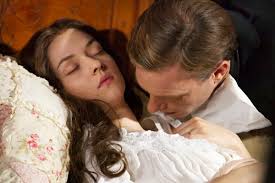
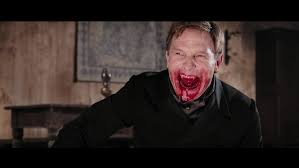
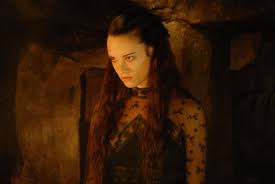

Another blogger Tom Newth has a very good review of this film on his website "Movies,,,,,,,,I've Seen, And What I Think Of Them, Selected Almost At Random". So here is a link to his review:
http://tomvonloguenewth.blogspot.com/2013/11/dario-argentos-dracula-3d.html
I conclude my look at Dario Argento with these scenes from a April 13, 2015 performance in Germany of Guiseppe Verdi's opera "MacBeth". The production was directed by Argento.


Here is a link, if it remains as some have been removed due to copyright infringement of the opening of the opera as directed and staged by Dario Argento.
https://www.youtube.com/watch?v=aVl4pngRLqY
It will be interesting to see what directions Argento may still take.
Another writing project only "The Church" followed "Opera" and an interesting two story film with George Romero entitled "Due oochi diabolici (Two Evil Eyes)" was released in Italy on January 25, 1990 and in the U.S.A. on a year later on October 25, 1991,
The motion picture is unique in that they are contemporary variations on two of Edgar Allan Poe's tales. The first is "The Facts in the Case of M. Valedemar" and stars Adrienne Barbeau filmed by Romero and "The Black Cat" by Argento which is a blend of several of Poe's tales and characters starring Havey Keitel as Roderick Usher. Dario Argento went to George Romero's home territory to film his segment in Pittsburgh, Pennsylvania.
The film is one that I am sure Dario Argento wanted to forget. It cost $9 million dollars to make and only grossed a world wide box office on initial release of $349,618.00.
Three more writing of film scripts with others and we come to my favorite Dario Argento film "ll fantasma dell' opera", but not may favorite version of "The Phantom of the Opera". It is at least the most interesting with Argento's plot twist on the character of the Phantom himself.
We also arrive at the first film with Argento's daughter Asia playing Christine Daae. Playing the Phantom was one of my favorite and usually overlooked actors of the time Julian Sands. Dario Argento's twist on the Gaston Leroux classic is In this film the Phantom is not scared and does not wear a mask and he communicates with Christine telepathically.This Phantom as a baby was saved by a pack of rats and they rise him under the Paris Opera House. The motion picture opened on November 20, 1998 in Italy. Nine days later critic David Rooney wrote in "Variety":
a gothic kitschfest that leaves no excess unexplored"--- "none of your sanitized Andrew Lloyd Webber treatment here, but plenty of bodice-ripping, lush romanticism, gore and gross antics with rats, all of which should tickle the director's stalwart devotees. But the script's clumsy plotting, its often unintentionally hilarious dialogue and some howlingly bad acting make the already widely sold pic likely to function best as a campy video entry for irreverent genre fans.As a "stalwart devotee" of Dario Argento I enjoyed the film, but I agree it is strange. However, why should every version be the same with slight variations and should we compare the different film treatments before Argento to Andrew Lloyd Webber?
Here is a link to the trailer for Dario Argento's "Phantom of the Opera":
https://www.youtube.com/watch?v=KFBMRdTHfXE
Asia Argento returned in her fathers "La sindrome di Stendha (The Stendhal Syndrome)" released in Italy January 26, 1996. A film many critics consider Dario Argento's last masterpiece.
IMDb describes the plot:
A young policewoman slowly goes insane while tracking down an elusive serial rapist/killer through Italy when she herself becomes a victim of the brutal man's obsession.The title refers to a disease that Asia Argento's character Detective Anna Manni has. The disease is defined as:
a psychosomatic disorder that causes rapid heartbeat, dizziness, fainting, confusion and even hallucinations when an individual is exposed to an experience of great personal significance, particularly viewing art.The opening of the film was short in Florence's Uffizi Gallery setting the exposure to art. This was the first Italian film to use Computer Generate Imagery. The title is an obvious play on Jimmy Stewart's problems in Alfred Hitchcock's "Vertigo".
A little Kim Novak in "Vertigo" above?
Speaking of "Vertigo" and Alfred Hitchcock.
On March 19, 2005 saw the release on Belgium television of a made for TV movie by Dario Argento. The film would not be released in Italy until December 1st and then on DVD as it was in almost every other country. Throughout his motion picture career Argento was being compared to the master Alfred Hitchcock. So it was not unimaginable that he would pen and direct a movie entitled: "Ti piace Hitchcock (Do You Like Hitchcok?)".
The film had specific references to the works of Alfred Hitchcock:
College student Julio has his leg broken and we see him ala James Stewart in "Rear Window" spying on the crimes being committed.
A character commits a murder for another person as had Robert Walker in "Strangers on a Train" for Farley Granger.
The killer is captured after keys are switched in "Dial M for Murder" to catch Ray Milland.
A distraught women is held from falling by her arm from a person who is above her is a take on Jimmy Stewart at the beginning of "Vertigo" almost falling off the roof.
The above bathtub scene with a falling wig is an obvious take on "Psycho".
Should you not get these while watching the movie. The rented video's from a store happen to be "Strangers on a Train" and "Dial M for Murder". The two posters seen in the store are for the motion picture "Vertigo" and Alfred Hitchcock.
Asia was once more working for her father in the final film of the "Three Mothers Trilogy". The Italian title is actually "La terza madre (The Third Mother)", but the film is known as "Mother of Tears" or by the English language press the film is also known as "Mater Lachrymarum (once again "Third Mother"). The motion pictures was originally released in Italy on the appropriate October 31, 2007, The reason the English press refers to the film as "Mater Lachrymarum" is because it is the confrontation with the third "Mother" witch who goes by that name.
This film was another Argento family production. Claudio and Dario produced, Dario directed and co-wrote and Asia and her mother Daria Nicolodi starred. As with "Suspiria" and "Inferno" the film took its story from Thomas De Quincey's "Suspiria de Profundis". Although in this film the "Third Mother" is referred too as "Mater Lachrymarum". We never knew from "Suspiria" that that witch was actually called "Matter Suspiriorum" and that the witch in "Inferno" was called "Matter Tenebrarum".
The film involves White Witches and the Catholic Church against "Matter Tenebrarum" who is attempting to bring the second age of magic. Asia Argento played Sarah the main White Witch, but who is unaware of her deceased parents and her own heritage in all of this. She discovers that her dead mother a extremely strong and powerful White Witch is the voice she keeps hearing that is guiding her against "Matter Lachrymarum". The climax of the film is between Sarah, a detective assisting her and "Matter Lachrymarum" and her disciples.
The last completed film by Dario Argento was released on April 12, 2012 at the "Brussels International Fantastic Film Festival" in Belgium. Once more Asia starred in "Argento's Dracula 3-D".
Another blogger Tom Newth has a very good review of this film on his website "Movies,,,,,,,,I've Seen, And What I Think Of Them, Selected Almost At Random". So here is a link to his review:
http://tomvonloguenewth.blogspot.com/2013/11/dario-argentos-dracula-3d.html
I conclude my look at Dario Argento with these scenes from a April 13, 2015 performance in Germany of Guiseppe Verdi's opera "MacBeth". The production was directed by Argento.
Here is a link, if it remains as some have been removed due to copyright infringement of the opening of the opera as directed and staged by Dario Argento.
https://www.youtube.com/watch?v=aVl4pngRLqY
It will be interesting to see what directions Argento may still take.
MARIO BAVA
On March 11, 1977 Director John Frankenheimer released a chilling movie starring Bruce Dern and Robert Shaw about a terrorist attack on the Super Bowl entitled “Black Sunday”. The film was based upon a novel of the same title by the author of “Silence of the Lambs” Thomas Harris. 41 years and 11 months earlier on April 14, 1935 America suffered a real “Black Sunday” which still stands as the worst Dust Storm in our nation’s history.
However, neither event compares to the terror I felt on Saturday February 18,1961 when I saw a black and white film from Italian Director Mario Bava entitled of course “Black Sunday”. The film starred Barbara Steele (Vincent Price’s wife in Roger Corman’s “The Pit and the Pendulum”) in a dual role as the lovely Princess Katia who unfortunately looks exactly like her ancestor the evil witch/vampire Asa Vajda also played by Steele. Asa needs a new body to return to the living and has been waiting for Katia to become the proper age. The hero of the piece was played by British actor John Richardson (Ray Harryhaussen’s “One Million Years B.C.” and Hammer films 1965 version of H. Rider Haggard’s “She” with Ursula Andress).
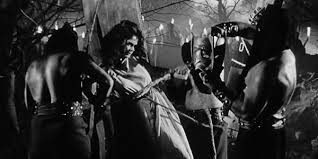

Barbara Steele as the Witch Asa about to have "The Mask of Satan" nailed to her face at the beginning of the motion picture.

Above, Barbara Steele in her first appearance as Katia


Barbara Steele as the Witch Asa about to have "The Mask of Satan" nailed to her face at the beginning of the motion picture.
Above, Barbara Steele in her first appearance as Katia

Above, John Richardson with Barbara Steele
Filmed in stark black and white, full of shadows, eerie sets, music and camera angles the film is a classic 1940’s style horror film. When it was released in the United States two minutes were cut by the censors and the American distributor had the film restricted to no admittence under 14 years of age which was a gimmick to get more viewers.The had to drop the word "Satan" in the title, because of the blow back from the Catholic Church and other faith based Christian groups at the time. I have the restored version of “La maschera del demonio” (“The Mask of Satan”) aka: “The Revenge of the Vampire” on DVD and it scared the hell out of my 16 year old granddaughter when she watched it at my home.
.
Oh, that restored footage that caused all the fuss? There is a scene where the witch/vampire laying still weak on her burial slab uses her will to have Dr. Kruvajan kiss, what was still considered by American Censors at the time, her corpse. Along with a few seconds clip of a painting of a nude Barbara Steele.
Here are some stills as the Witch's henchmen Igor Javuto comes back from the grave.
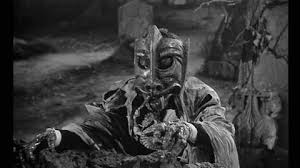


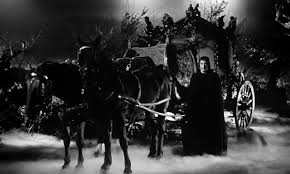
Filmed in stark black and white, full of shadows, eerie sets, music and camera angles the film is a classic 1940’s style horror film. When it was released in the United States two minutes were cut by the censors and the American distributor had the film restricted to no admittence under 14 years of age which was a gimmick to get more viewers.The had to drop the word "Satan" in the title, because of the blow back from the Catholic Church and other faith based Christian groups at the time. I have the restored version of “La maschera del demonio” (“The Mask of Satan”) aka: “The Revenge of the Vampire” on DVD and it scared the hell out of my 16 year old granddaughter when she watched it at my home.
.
Oh, that restored footage that caused all the fuss? There is a scene where the witch/vampire laying still weak on her burial slab uses her will to have Dr. Kruvajan kiss, what was still considered by American Censors at the time, her corpse. Along with a few seconds clip of a painting of a nude Barbara Steele.
Here are some stills as the Witch's henchmen Igor Javuto comes back from the grave.
Actually I didn’t realize I already knew Mario Bava’s work from the previous two years. So take it away Dr. Frank N. Further:
“Let me show you around
Maybe play you a sound
You look like you´re both pretty groovie
Or if you like something visual
That´s not too abysmal
We could take in an old Steve Reeves movie”
Mario Bava had something in common with Robert Wise and Ishiro Honda. Like those two directors he started out behind the camera and was given a shot at Assistant Director. In the case of Bava his camera work were on four of those old Steve Reeve’s movies I enjoyed. I am using the United States release years. Which are not necessary when the motion picture was actually made.
Maybe play you a sound
You look like you´re both pretty groovie
Or if you like something visual
That´s not too abysmal
We could take in an old Steve Reeves movie”
Mario Bava had something in common with Robert Wise and Ishiro Honda. Like those two directors he started out behind the camera and was given a shot at Assistant Director. In the case of Bava his camera work were on four of those old Steve Reeve’s movies I enjoyed. I am using the United States release years. Which are not necessary when the motion picture was actually made.
1958’s Hercules
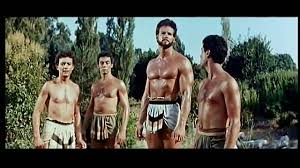

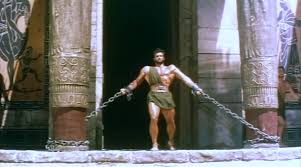
1959’s Hercules Unchained
1959’s Hercules Unchained
1959’s The Giant of Marathon


“The Giant of Marathon” was Directed by Jacques Tourneur 1957’s “Night of the Demon” aka: “Curse of the Demon” and Bava did the cinematography only.
1959’s The White Warrior

“The Giant of Marathon” was Directed by Jacques Tourneur 1957’s “Night of the Demon” aka: “Curse of the Demon” and Bava did the cinematography only.
1959’s The White Warrior
So what was Mario Bava’s background before he made such an impression upon both my granddaughter and myself?
Bava was born in San Remo, Italy on July 30, 1914 and his father was cinematographer/ special effects designer Eugenio Bava. Eugenio is considered the father of Italian Motion Picture Special Effects.
Eugenio has seven films to his credit as cinematographer including the 1913 “Quo Vadis”. A silent film with two interesting distinctions for film historians. This was the first film to reach the length of two hours. Second when it played in New York City it had the unprecedented ticket price of $1.00.
Eugenio Bava would work two of his son’s films "La maschera del demonio (Mask of Satan/Black Sunday)". One of the props he designed was the mask of the title. The second film was "I tre volti della paura (Three Faces of Fear aka: Black Sabbath)".
Prior to World War 2 Mario Bava studied under his father in Motion Special Effects at Benito Musollini's Istituto LUCE, I could not locate any titles of the work they did together, but the only film listed anywhere for this period was "Camicia nera (Black Shirt)". Musollini's soldiers were called "Black Shirts", because of the uniforms they wore.
There are two shorts that Mario Bava did as cinematographer in the pre-war period prior to Hitler's invasion of Poland with the great Italian director Roberto Rossellini. The first was from 1939 entitled in English "The Bullying Turkey". The propaganda short ran 6 minutes and is described on Amazon's IMDb this way:
Bava was born in San Remo, Italy on July 30, 1914 and his father was cinematographer/ special effects designer Eugenio Bava. Eugenio is considered the father of Italian Motion Picture Special Effects.
Eugenio has seven films to his credit as cinematographer including the 1913 “Quo Vadis”. A silent film with two interesting distinctions for film historians. This was the first film to reach the length of two hours. Second when it played in New York City it had the unprecedented ticket price of $1.00.
Eugenio Bava would work two of his son’s films "La maschera del demonio (Mask of Satan/Black Sunday)". One of the props he designed was the mask of the title. The second film was "I tre volti della paura (Three Faces of Fear aka: Black Sabbath)".
Prior to World War 2 Mario Bava studied under his father in Motion Special Effects at Benito Musollini's Istituto LUCE, I could not locate any titles of the work they did together, but the only film listed anywhere for this period was "Camicia nera (Black Shirt)". Musollini's soldiers were called "Black Shirts", because of the uniforms they wore.
There are two shorts that Mario Bava did as cinematographer in the pre-war period prior to Hitler's invasion of Poland with the great Italian director Roberto Rossellini. The first was from 1939 entitled in English "The Bullying Turkey". The propaganda short ran 6 minutes and is described on Amazon's IMDb this way:
A satire in which "Perfidious Albion," a big turkey representing England, goes around pecking at the hens, representing the nations of Europe, until defied by a rooster representing Italy.Also in 1939 was "Lively Teresa" which runs 7 minutes about a ten year old girl who attempts to capture a butterfly, but is prevented as the other insects stop her.
Mario Bava's first credit as a camera operator came on the Italian film from December 1940 "Ecco la felicita (Here Happiness)" also known as "A Comedy of Happiness" which was an Italian/French co-production. The film featured a young Louis Jordan and the Mexican/American Actor Ramon Navarro who played the original "Ben Hur" in the silent film.
For the next either 16, or 17 years depending on who you reference Mario Bava developed his skills behind the camera, as a cinematographer. One of the films Bava was cinematographer on was called in English "Elixir of Love" from January of 1947. In this film was an uncredited actress starting out named Gina Lollobrigida. By December 2, 1948 Bava would be cinematographer on " Pagliacci (Amore tragico) Love of a Clown" starring Lollobrigida.
Between this film with Gina Lollobrigida and Mario Bava's "discovery" as a director/cinematographer were 30 films of all sorts. Feature length, shorts and documentary styles. All refining his craft.
It would be 1956 when Mario Bava had his big break. When his friend Director Riccardo Freda walked off a film and Bava found himself directing the last half. The film was 1956’s “I Vampiri” (The Vampires) re-edited for the United States as “The Devil’s Commandment” and re-edited again for the U.K. as “Lust of the Vampires” in what is described as a “Sexy” version. The running times were between 80 to 90 minutes. The significance of this box office flop was the fact it became the first Italian Horror movie made since before World War 2 and the first ever with Sound. Benito Mussolini had banned horror films under his rule.

Here is a link to the film in Italian with optional English subtitles. This is a 78 minute version.
https://www.youtube.com/watch?v=4I5UctJ-Ldk
Between 1958's "Hercules" and 1959's "Hercules Unchained" was another motion picture I liked from Italy that had the cinematography work of, to me the yet unknown, Mario Bava. The film was "La morte viene dallo spazio / Death Comes From Outer Space)". The English dub title was a little more dramatic "The Day the Sky Exploded". Bava was also supposed to have done the Special Effects on the film. Although no screen credit shows for this work.
Normally I don't depend on Wikipedia, but the websites description of the plot is great reading:
An atomic rocket is launched on a manned moon mission, but one of the engines malfunctions. The rocket's steering is broken. The pilot disengages the capsule and returns to Earth. The atomic booster, however, continues on, eventually crashing into and exploding in an asteroid belt. The explosion dislodges many asteroids from their orbits. They coalesce into one giant cluster and are heading for earth. As the cluster approaches earth it causes global scale disasters: tidal waves, wind, fire storms and earthquakes. One scientist loses his sanity in the crisis and disables the great computer needed to calculate all the firing data. He is stopped and the data provided. When there seems to be no reasonable hope that humans could eventually avoid the crash, scientists find that the moon will pass in front of the cluster so that the Earth will be shielded from most of it. However, a small part of the cluster is not shielded and goes towards the Earth. At this point, mankind's only hope is to arm every missile on earth with a nuclear warhead and fire them all at the cluster. The nations of the world band together and fire the volley. The cluster is destroyed.The movie stars German Actor Paul Hubschmid better known to English speaking audiences as Paul Christian and the star of Ray Harryhausen's "The Beast from 20,000 Fathoms". Why they didn't bill him as Christian makes no sense to me.
Its nice that so many of Mario Bava's early works are in public domain. Here is the link to "The Day the Sky Exploded".
https://www.youtube.com/watch?v=NDe7_zr1Yds
So you want to fool Italy and the entire World that this is not an Italian film. You do what Bava’s friend Riccardo Freda did, at least in his own mind, give yourself film credit as Director Robert Hamton (I think he was trying for Hampton, but this is the correct spelling) and ignore all the other Italian names in the production. The film was 1959’s “Caltiki-il mostro immortale” aka: “Caltiki-The Immortal Monster” with Mario Bava’s camera work and again uncredited Directing assistance under the name John Foam. Very American sounding. The motion picture would be released in the United States one year later in 1960.



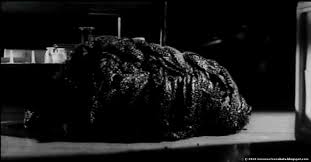
1960 was the year Mario Brava was “Discovered” by the World’s movie fans and truly came into his own. His aforementioned “La Maschera Del Demonio” was made and the film critics started talking about his work comparing them to the heyday of Universal Studios and the work of “The House of Hammer”. Actually it was Hammer’s 1958 Christopher Lee/Peter Cushing film “Dracula” aka: “Horror of Dracula” that Bava claimed inspired him to make his first solo Director/Cinematographer film.


This same year an American/Italian co-production came out. It was “Estr e il re” aka: “Esther and the King” starring Joan Collins and Richard Egan. The film’s Producer was “One Eye” Raul Walsh. Who 30 years earlier had changed Marion Robert Morrison aka: Marion Mitchell Morrison’s name into John Wayne. The American release date was December 14, 1960 and the opening credits also stated Walsh was the solo Director of this Biblical Epic. However, when the film was released in Italy on February 17, 1961 the opening credits indicated the film was Directed by Raul Walsh and Mario Brava. This co-director issue was known, but Raul Walsh claimed complete credit for the entire shoot. However, it is only the North American cuts that do not give credit to Mario Bava as Walsh could not control the Foreign releases, but he did attempt to fight them. Raul Walsh would only make two more motion pictures and neither were made with Foreign assistance.



What does an up and coming new talent do? He returns to his roots and “Hercules’, but without Steve Reeves. The film was entitled: “LErcole al Centro della Terra” aka” Hercules in the Center of the Earth” aka: “Hercules in the Haunted World” aka” Hercules vs the Vampires” written, directed and photographed by Mario Bravo. I mention this film for two reasons only. Third billing went to British Actor Christopher Lee and the film is considered the best of “the muscleman” films Italy was turning out seemingly weekly in the 1960’s, because of Bravo’s stylish sets and camera work. Aside: in the English language dub it is not Christopher Lee's voice you hear for his character.


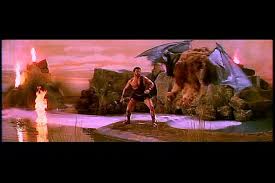
"Hercules in the Haunted World" is a most see film and here's a another link to the full length motion picture.
https://www.youtube.com/watch?v=yJx9BwLq3SY
On February 10, 1963 an Italian Gallo film (thriller) was released directed by, co-written by and cinematography by Mario Bava. The film is an interesting example of a failure made even more of a failure by American International Pictures when it released the English language cut.
The film was originally titled "La ragazza che sapeva troppo (The Girl Who Knew To Much)" in Italy on February 10, 1963. The basic plot is suggest Bava was influenced by Alfred Hitchcock. A tourist, a young women, visiting Rome witnesses a murder, but when the police arrive there is no corpse. More very blood murders follow. The killings are dubbed "The Alphabet Murders" as the victims last names are in alphabetical order.
On May 20, 1964 the film was released in the United States by AIP as "The Evil Eye". The film has major cuts and scenes moved. The film score was removed by AIP something they seemed to like to do so that their resident composer Lex Baxter could come with another one for sell on the AIP record label at the time. The original score featured Jazz and was by Roberto Nicolosi and of course actually added to the motion picture while Baxter's distracted.
On page 201 of "After Hitchcock: Influence,Imitation, and Intertextuality" by David Boyd and R. Barton Palmer is this quote from Mario Bava on the motion picture:

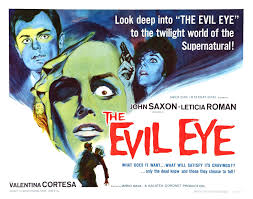




https://www.youtube.com/watch?v=yJx9BwLq3SY
On February 10, 1963 an Italian Gallo film (thriller) was released directed by, co-written by and cinematography by Mario Bava. The film is an interesting example of a failure made even more of a failure by American International Pictures when it released the English language cut.
The film was originally titled "La ragazza che sapeva troppo (The Girl Who Knew To Much)" in Italy on February 10, 1963. The basic plot is suggest Bava was influenced by Alfred Hitchcock. A tourist, a young women, visiting Rome witnesses a murder, but when the police arrive there is no corpse. More very blood murders follow. The killings are dubbed "The Alphabet Murders" as the victims last names are in alphabetical order.
On May 20, 1964 the film was released in the United States by AIP as "The Evil Eye". The film has major cuts and scenes moved. The film score was removed by AIP something they seemed to like to do so that their resident composer Lex Baxter could come with another one for sell on the AIP record label at the time. The original score featured Jazz and was by Roberto Nicolosi and of course actually added to the motion picture while Baxter's distracted.
On page 201 of "After Hitchcock: Influence,Imitation, and Intertextuality" by David Boyd and R. Barton Palmer is this quote from Mario Bava on the motion picture:
thought [the film] was too preposterous. Perhaps it could have worked with James Stewart and Kim Novak, whereas I had...oh, well, I can't even remember their names.
After his Hitchcock turned Brava came up with another classic in a French/Italian co-production entitled: “I tre volti della paura (The Three Faces of Fear) aka: “Black Sabbath”. The film contained three short stories and holds its own today. The film’s final sequence featured Boris Karloff and Mark Damon and is based upon a Russian Horror Story “The Wurdalak”. The only problem here is that American International Pictures did the English language version
Starting with "Black Sunday" American International Pictures had now destroyed three of Mario Bava's visions. Part of the problem was the morality issues in the United States at the time and censorship, but it seemed AIP just didn't understand these films also.
Starting with "Black Sunday" American International Pictures had now destroyed three of Mario Bava's visions. Part of the problem was the morality issues in the United States at the time and censorship, but it seemed AIP just didn't understand these films also.
Several changes were made from to the script even after the film had gone into production. American International Pictures had a member of their staff suggest changes for Mario Bava to make the film "acceptable" for the American target audience. The company created their own English language dub that removed scenes involving violence and re-edited scenes and moved their position to fit the AIP version. American International completely changed the plot of "The Telephone" turning it into a supernatural story and removing any reference to lesbianism or prostitution.
The uncut version of this terror masterpiece is available in Italian with English subtitles on DVD/Blue Ray as part of the "Mario Bava Collection".




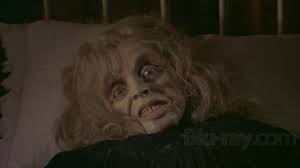
As a footnote in 1968 Tony Iommi, Geezer Butler, Bill Ward and Ozzy Osbourne formed a British Rock Group. While at a gig in 1969 the band discovered they were being confused with another group named “Earth”. It happened that across the street from a recording studio they were at was a movie theater showing Mario Bravo’s “Black Sabbath”. The movie inspired the band to change their name and write the song “Black Sabbath” and the rest is Rock and Roll History.

Mario Bava's next two films were "La frusta e il corpo (The Whip and the Body) known in the U.K. as "Night is the Phantom". The film stars Christopher Lee and Israeli actress Daliah Lavi. The story is about a sadistic nobleman who is found dead and returns from the grave to terrorize the remaining members of his family.



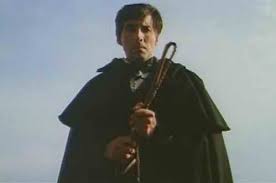
This was followed by "Sei donne per l'assassino (Blood and Black Lace) aka: "Six Women for the Murderer". The film is considered the template for the slasher and high body count films of the 1980's and is some respects surpasses them. It is about a killer all in black murdering fashion models. The motion picture starred Cameron Mitchell and Eva Bartok. The film failed in Italy and only made half of its budget. When it was to be released in the United States American International Pictures actually refused to release it claiming, according to the 2006 liner notes, that the film was:
Bava got in on the new trend in Italy of making American Westerns. His first entry was in 1964 “La strade per Forte Alamo” aka: “The Road to Fort Alamo” and that’s all the reader needs to know. Other than his name on the film was not Mario Bava, but John M. Old.

In 1965 Bravo again was right on the mark with his film “Terrore nello spazio (The Planet of the Vampires) and again this film holds its own today, because of his cinematography and the interesting story he co-wrote. The film was a Italian/Spanish co-production starring American 1940’s/1950’s actor Barry Sullivan.

As a footnote in 1968 Tony Iommi, Geezer Butler, Bill Ward and Ozzy Osbourne formed a British Rock Group. While at a gig in 1969 the band discovered they were being confused with another group named “Earth”. It happened that across the street from a recording studio they were at was a movie theater showing Mario Bravo’s “Black Sabbath”. The movie inspired the band to change their name and write the song “Black Sabbath” and the rest is Rock and Roll History.
Mario Bava's next two films were "La frusta e il corpo (The Whip and the Body) known in the U.K. as "Night is the Phantom". The film stars Christopher Lee and Israeli actress Daliah Lavi. The story is about a sadistic nobleman who is found dead and returns from the grave to terrorize the remaining members of his family.
This was followed by "Sei donne per l'assassino (Blood and Black Lace) aka: "Six Women for the Murderer". The film is considered the template for the slasher and high body count films of the 1980's and is some respects surpasses them. It is about a killer all in black murdering fashion models. The motion picture starred Cameron Mitchell and Eva Bartok. The film failed in Italy and only made half of its budget. When it was to be released in the United States American International Pictures actually refused to release it claiming, according to the 2006 liner notes, that the film was:
too intense, too adult for the 'kiddie tradeThe film was released in the United States by the Woolner Brothers with one change. They had Rankin/Bass create an animated title sequence with mannequins being shot full of bloody bullet holes.
Bava got in on the new trend in Italy of making American Westerns. His first entry was in 1964 “La strade per Forte Alamo” aka: “The Road to Fort Alamo” and that’s all the reader needs to know. Other than his name on the film was not Mario Bava, but John M. Old.
In 1965 Bravo again was right on the mark with his film “Terrore nello spazio (The Planet of the Vampires) and again this film holds its own today, because of his cinematography and the interesting story he co-wrote. The film was a Italian/Spanish co-production starring American 1940’s/1950’s actor Barry Sullivan.
While in deep uncharted space two spaceships receive a distress signal from a planet and decide to investigate. Sound somewhat familiar?
Approaching the planet some force attempts to control both crews causing them to fight each other. One of the ships crashes and when the other manages to land they find the other crew has killed themselves. During the night after burying the other ship’s crew. The dead crew members come to life possessed by some spiritual force and begin attacking the living members of the other craft.



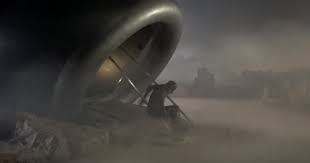
Below the Giant Skeleton found by the Space Explorers. Look familiar?
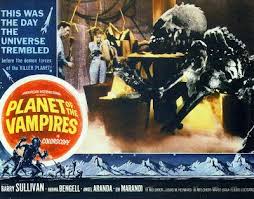
The English Dub of "Planet of the Vampires", again by American International Pictures, was written by Ib Melchior and Louis M. Heyward. Years later several film critics believed this film’s narrative details and visual design influenced Ridley Scott’s 1979 “Alien” and I would have to agree and add his 2012 "Prometheus" also. So we have Scott borrowing basic plot lines from the 1958 Sci-Fi "It, the Terror from Beyond Space" and "Planet of the Vampires". Along with claiming all the set designs came from H.R. Giger's designs and not those of Giorgio Giovannini from this Mario Bava film.
You want a better look and enjoy a very atmospheric motion picture? This is a link to the English language version of the film and it is pretty damn good:
https://www.youtube.com/watch?v=nhzb-TEaQYE
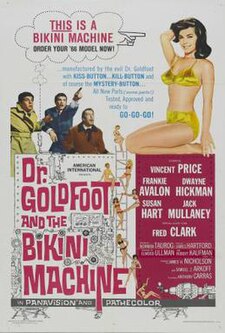
The year 1966 raised the question:
Was Mario Bravo making a Frankie Avalon and Annette Funicello "Beach Party" parody?
The American title of the finished Mario Bava picture released by American International Pictures, who was still making the "Beach Party" franchise, was "Dr. Goldfoot and the Girl Bombs". An obvious sequel to the Vincent Price, Frankie Avalon and Dwayne Hickman film of the previous year "Dr. Goldfoot and the Bikini Machine".
However, this new motion picture was made in Italy with an almost total Italian cast speaking Italian. The American Actors in the film where Vincent Price seemingly reprising his role of "Dr. Goldfoot" from the year before and because Frankie Avalon was not available. Price's co-star in this Italian film was American Teen Singing Idol Fabian.
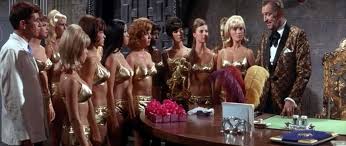
Approaching the planet some force attempts to control both crews causing them to fight each other. One of the ships crashes and when the other manages to land they find the other crew has killed themselves. During the night after burying the other ship’s crew. The dead crew members come to life possessed by some spiritual force and begin attacking the living members of the other craft.
Below the Giant Skeleton found by the Space Explorers. Look familiar?
The English Dub of "Planet of the Vampires", again by American International Pictures, was written by Ib Melchior and Louis M. Heyward. Years later several film critics believed this film’s narrative details and visual design influenced Ridley Scott’s 1979 “Alien” and I would have to agree and add his 2012 "Prometheus" also. So we have Scott borrowing basic plot lines from the 1958 Sci-Fi "It, the Terror from Beyond Space" and "Planet of the Vampires". Along with claiming all the set designs came from H.R. Giger's designs and not those of Giorgio Giovannini from this Mario Bava film.
You want a better look and enjoy a very atmospheric motion picture? This is a link to the English language version of the film and it is pretty damn good:
https://www.youtube.com/watch?v=nhzb-TEaQYE

The year 1966 raised the question:
Was Mario Bravo making a Frankie Avalon and Annette Funicello "Beach Party" parody?
The American title of the finished Mario Bava picture released by American International Pictures, who was still making the "Beach Party" franchise, was "Dr. Goldfoot and the Girl Bombs". An obvious sequel to the Vincent Price, Frankie Avalon and Dwayne Hickman film of the previous year "Dr. Goldfoot and the Bikini Machine".
However, this new motion picture was made in Italy with an almost total Italian cast speaking Italian. The American Actors in the film where Vincent Price seemingly reprising his role of "Dr. Goldfoot" from the year before and because Frankie Avalon was not available. Price's co-star in this Italian film was American Teen Singing Idol Fabian.
The Italian film title was actually “Le spie vengono dal semifreddo (The Spies Who Came in from the Semicold)” which was an obvious play on the Richard Burton film based upon the John le Clarre novel “The Spy Who Came in from the Cold”. It is reported that the original Italian cut of the film had more footage of Italian Comedian Team Franco and Ciccio than the American actors including Vincent Price. Along with a somewhat different story line. Two movies for the price of one?

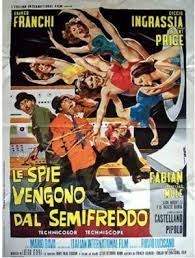

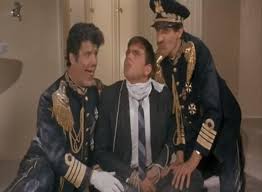
The answer to the question I posed was that Mario Bava was contractually trapped into making this co-production in Italy. When his film was finished and cut. AIP did what AIP does and re-edited the film. Rewrote the script and redid the music, but Mario Bava's name remained even though nothing remained of what he had filmed and edited in Italy. Although if the truth be known he hated the Italian comedy he was forced to direct and film also.
Have fun for five minutes with this mini-version of the movie:
https://www.youtube.com/watch?v=CUT9NwOPG5A
Unlike his earlier Western Mario Bava was both director and cinematographer on a fun Spaghetti Western entitled: "Roy Colt and Winchester Jack" released in Italy on August 13, 1970. A comedy about two inapt bad guys and a treasure map for a fortune in gold. What is also interesting are the two American Actors playing the title characters.
Although he had been in movies and television since 1951 playing Roy Colt was Brett Halsey. Halsey starred in two classic 1950's Science Fiction films both in 1959. In the first he played Philippe Delambre opposite Vincent Price as his Uncle in "The Return of the Fly". The second was as Dr. Carl Neilson, Jr.in "The Atomic Submarine" about an alien flying saucer in the arctic sea.
The other actor playing Winchester Jack was Charles Southwood. In 1991 he founded "Death Cigarettes" He decided to be honest about the dangers of cigarette smoking that he had also been experiencing. So besides the required warning labels. Southwood's product was sold in coffins.


The final film I want to discuss was titled: “Gili orrori del castello di Norimberga” a West German/Italian co production from 1972, but better known as “Baron Blood” aka: “The Torture Chamber of Baron Blood” aka: “Baron Vampire". It is slow paced, but is truly stylish and as usual the use of color becomes a medium that shows off Brava’s eye for composition wonderfully.
Here is the description of the plot from the linear notes on the DVD release:
The answer to the question I posed was that Mario Bava was contractually trapped into making this co-production in Italy. When his film was finished and cut. AIP did what AIP does and re-edited the film. Rewrote the script and redid the music, but Mario Bava's name remained even though nothing remained of what he had filmed and edited in Italy. Although if the truth be known he hated the Italian comedy he was forced to direct and film also.
Have fun for five minutes with this mini-version of the movie:
https://www.youtube.com/watch?v=CUT9NwOPG5A
Unlike his earlier Western Mario Bava was both director and cinematographer on a fun Spaghetti Western entitled: "Roy Colt and Winchester Jack" released in Italy on August 13, 1970. A comedy about two inapt bad guys and a treasure map for a fortune in gold. What is also interesting are the two American Actors playing the title characters.
Although he had been in movies and television since 1951 playing Roy Colt was Brett Halsey. Halsey starred in two classic 1950's Science Fiction films both in 1959. In the first he played Philippe Delambre opposite Vincent Price as his Uncle in "The Return of the Fly". The second was as Dr. Carl Neilson, Jr.in "The Atomic Submarine" about an alien flying saucer in the arctic sea.
The other actor playing Winchester Jack was Charles Southwood. In 1991 he founded "Death Cigarettes" He decided to be honest about the dangers of cigarette smoking that he had also been experiencing. So besides the required warning labels. Southwood's product was sold in coffins.
The final film I want to discuss was titled: “Gili orrori del castello di Norimberga” a West German/Italian co production from 1972, but better known as “Baron Blood” aka: “The Torture Chamber of Baron Blood” aka: “Baron Vampire". It is slow paced, but is truly stylish and as usual the use of color becomes a medium that shows off Brava’s eye for composition wonderfully.
Here is the description of the plot from the linear notes on the DVD release:
In Italian director Mario Bava's sumptuous Technicolor Gothic horror classic an American student Peter Kleist travels to Austria on summer holiday to learn more about his family roots. By reciting an incantation on a piece of ancient parchment, he succeeds in scaring up a genuine ancestor--Baron Otto von Kleist, a 16th century sadistic nobleman whose appetite for cruelty earned him the nickname "Baron Blood." Before Peter can reverse the incantation, the parchment burns...How many innocents will die before Peter learns how to send the evil Baron back to the hell from whence he came?Film critics panned the American cut by none other than American International Pictures. AIP for their usual reasons cut eight minutes from the story and replaced the original score by Stevio Girotti also as usual with a score from their in house composer
The movie starred American Actor Joseph Cotton as Baron Otto von Kleist and American Alfred Becker. Playing Eva the young women caught in Baron’s Blood’s web was German Actress Elke Sommer playing the designer for a renovation of von Kleist’s castle into a hotel. As with "Black Sabbath" the uncut version of this film is now available in Italian also on "The Mario Bava" collection.
There is an Urban Legend about a Nine Mile deep Borehole on the Kola Peninsula of Russia that leads directly to hell. The legend first surfaced in a Finnish Newspaper. Reportedly a group of Russian Scientists led by Mr. Azzacov drilled the hole and then were able to lower a very heat resistance microphone into it and recorded people talking.
In 1989 Christian based “Trinity Broadcasting Network” had a program in which they made the claim that the tape recording of the voices was proof that “Hell Existed”.
In 1989 Christian based “Trinity Broadcasting Network” had a program in which they made the claim that the tape recording of the voices was proof that “Hell Existed”.
Since that TBN Broadcast many versions of the story of “The Well to Hell” have been done. Today it can still be found as an active Urban Legend on the Internet. However, in truth this was of course a hoax indirectly connecting Mario Bava. The tape was a clever mix from the soundtrack of “Baron Blood”.
Three more films and directing some episodes of two Italian television mini-series. One about Homer's "Odyssey".and the other the Burt Lancaster "Moses the Lawgiver" followed "Baron Blood"..
Three more films and directing some episodes of two Italian television mini-series. One about Homer's "Odyssey".and the other the Burt Lancaster "Moses the Lawgiver" followed "Baron Blood"..
On April 25, 1980 in Rome, Italy, Mario Bava passed away at the age of 65. ..




No comments:
Post a Comment